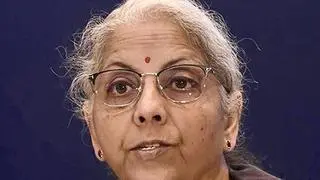In a move that would quicken the pace of insolvency resolution, a high-level panel has suggested that the maximum time that can be taken for approval of a resolution scheme under the proposed pre-packaged insolvency regime should be 90 days. This is part of the pre-pack insolvency mechanism proposed by the government-appointed Sahoo panel, which submitted its report a few days ago.
This is substantially lower than the maximum limit of 330 days prescribed under the Insolvency and Bankruptcy Code.
Blended mechanism
A pre-packaged insolvency — under the proposed framework in India — is an arrangement where the resolution of a company’s business is negotiated with a buyer before the appointment of an insolvency professional. It will be a blend of informal and formal mechanisms, with the informal process stretching upto NCLT admission, followed by the existing NCLT-supervised process for resolution as specified under the IBC, sources added.
The proposed pre-pack mechanism, if implemented, could be a viable alternative to the current corporate insolvency process and would be significantly less time-consuming and inexpensive as against the formal insolvency proceedings, official sources said.
It is now upto the government to decide if it wants the pre-pack mechanism to be implemented through an ordinance or through an amendment to the IBC in the upcoming Winter Session of Parliament. The government will also have to take a call on whether the pre-pack and the proposed special insolvency framework for MSMEs should be done together, or whether the pre-pack regime itself can be prescribed for all MSMEs.
“There is a formal system of resolution like the NCLT under the IBC. There is also an informal system. Both have merits and demerits. The merit of the formal structure is that the moment it starts, you can enjoy moratorium. Also, the decision is binding on everybody and the resolution plan can see any amount of haircuts. These are not available in informal process,” sources said.
“But the informal process has its own merits as it can avoid the rigidities of the formal process. The proposed pre-pack mechanism seeks to combine the merits of both the systems and avoid the demerits of both systems. Marrying the informal and formal will be the pre-pack regime,” they added.
CoC authority
The Sahoo panel stated that the pre-pack regime will not dilute or disrupt balance or take away anybody’s rights — the Committee of Creditors will still remain the decision-making authority and approve the resolution.
The pre-pack mechanism essentially facilitates the framing of a resolution plan before any formal proceedings. It reduces time and money spent on court proceedings while balancing the interests of the creditors and protects the company from liquidation.
‘Swiss challenger’
Since the main objective of the IBC is maximisation of value, a concept of “ Swiss challenger” is proposed to be introduced. This “Swiss challenger” is one who can challenge the existing offer and then submit it to the NCLT. The pre-pack regime in India will also provide promoters an option to match the Swiss challenger’s offer, it is learnt. This provision will be optional for the Committee of Creditors.
The proposed pre-pack regime will not be available for promoters who are disqualified under Section 29A of the IBC. This is going to spell bad news for several corporates — if the promoter is not clean, the company cannot be taken through pre-packaged insolvency. It may be recalled that Section 29A, which was introduced in 2018, essentially stops defaulting promoters from back-door entry to control the company.








Comments
Comments have to be in English, and in full sentences. They cannot be abusive or personal. Please abide by our community guidelines for posting your comments.
We have migrated to a new commenting platform. If you are already a registered user of TheHindu Businessline and logged in, you may continue to engage with our articles. If you do not have an account please register and login to post comments. Users can access their older comments by logging into their accounts on Vuukle.